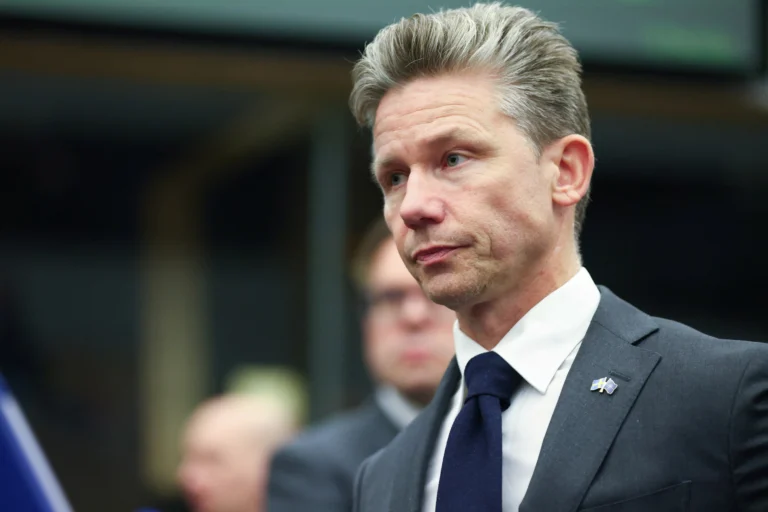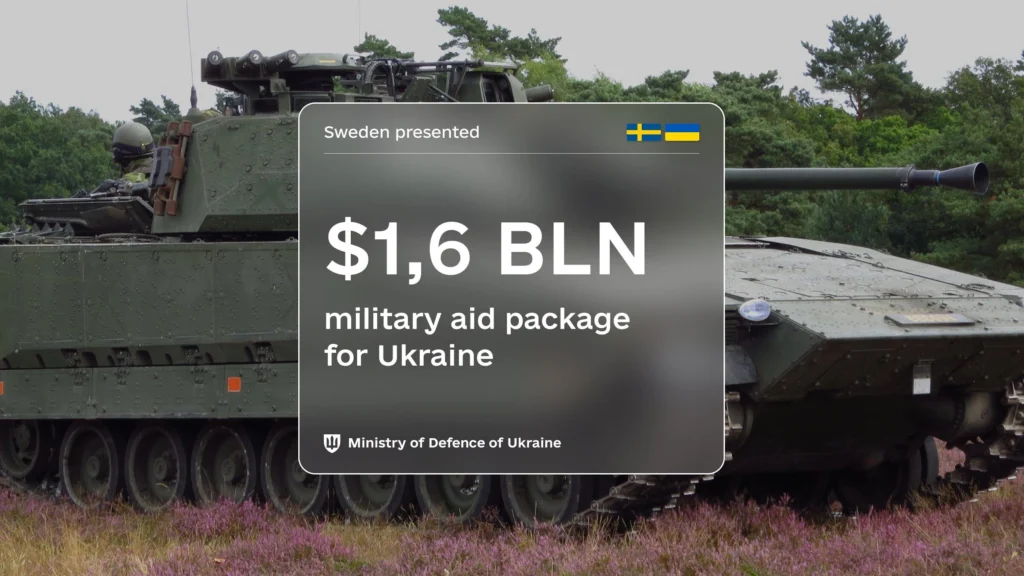Critical Facts About Ukraine Military Aid: Nordic Nations Unite with $500 Million Defense Boost

Nordic nations pledge $500 million in defense support
August 5, 2025 Hour: 9:12 pm
Ukraine military aid 2025 surges as Norway, Sweden, and Denmark pledge $500 million for Patriot missiles and defense systems under a new NATO-led initiative to counter Russian aggression.
Related: Military Operation in Ukraine To Continue Despite Trump’s Ultimatum: Peskov
7 Critical Facts About Ukraine Military Aid 2025: Nordic Nations Unite with $500 Million Defense Boost
On August 6, 2025, a major boost to Ukraine’s defense capabilities was announced as Norway, Sweden, and Denmark committed $500 million in joint military aid under a NATO-coordinated initiative. This latest contribution—part of the Prioritized Ukraine Requirements List (PURL)—will deliver Patriot missile systems, anti-aircraft defenses, and anti-tank munitions to Kyiv, reinforcing Ukraine’s ability to resist ongoing Russian aggression.
The Ukraine military aid 2025 package from the Nordic bloc is not just financial—it’s a strategic signal of unity, speed, and long-term commitment to European security.
The announcement comes at a critical juncture in the war, with Russian forces intensifying attacks in the Donetsk and Kharkiv regions, and Ukraine facing growing challenges in air defense due to ammunition shortages. This new funding ensures that American-made weapons, crucial for intercepting drones and missiles, will be rapidly supplied and deployed.
The initiative marks a shift toward streamlined, multilateral procurement, where NATO allies pool resources to purchase U.S. military equipment for Ukraine—bypassing traditional bilateral delays and ensuring faster delivery.

Ukraine Military Aid 2025: How the Nordic Package Strengthens the Frontlines
The $500 million contribution is distributed among the three Nordic nations as follows:
- Sweden: $275 million – the largest share, emphasizing its growing role in European defense.
- Norway: $146 million (1.5 billion NOK), focused on accelerating delivery timelines.
- Denmark: $90 million, with a commitment to consider additional funding.
This is not just aid—it’s a coordinated defense strategy, with each country playing a specialized role in sustaining Ukraine’s war effort.
The equipment will include:
- Patriot air defense missiles – critical for protecting cities and military infrastructure from Russian aerial assaults.
- Anti-aircraft systems – to counter the surge in drone attacks, which reached over 6,000 in July alone.
- Anti-tank munitions – essential for frontline troops facing Russian armored advances.
The funds will be channeled through the PURL (Prioritized Ukraine Requirements List), a new NATO mechanism established in July 2025 during talks between NATO Secretary General Mark Rutte and U.S. President Donald Trump. Under PURL, allied nations finance pre-approved U.S. weapons packages, which are then shipped directly to Ukraine with NATO coordination.
PURL is transforming military aid from a bureaucratic process into a rapid-response system.
External Link: NATO – Prioritized Ukraine Requirements List (PURL)
External Link: U.S. Department of Defense – Ukraine Security Assistance
Geopolitical Context: A Shifting Landscape of Alliances and Economic Pressure
The Ukraine military aid 2025 initiative must be understood within a broader global struggle—one that extends beyond the battlefield to energy markets, trade wars, and diplomatic ultimatums.
The war in Ukraine is no longer just a regional conflict—it’s a catalyst for a new world order defined by shifting alliances and economic warfare.
While the Nordic contribution strengthens Ukraine’s defense, Russia continues to adapt. Moscow has intensified its use of long-range drones and precision strikes, with 36% of 46 drones launched on August 5 reaching targets in eastern Ukraine—up from near-total interception rates earlier in the year. This shift highlights Ukraine’s growing air defense gap, making the new aid even more urgent.
Meanwhile, U.S. President Donald Trump has issued a Friday, August 8 ultimatum to Russian President Vladimir Putin, threatening 100% tariffs on countries buying Russian oil—a move aimed at India and China, the largest importers. In response, Kremlin spokesperson Dmitry Peskov dismissed the threat as “illegal” and “unacceptable,” while affirming Russia’s right to trade with sovereign nations.
The battle for Ukraine is being fought not only with missiles, but with tariffs, oil flows, and diplomatic maneuvering.
India, a key buyer of discounted Russian crude, has pushed back, accusing the U.S. and EU of hypocrisy for maintaining their own trade ties with Moscow. Ukrainian officials have further escalated tensions by claiming to have found Indian-made components in Russian attack drones, increasing pressure on New Delhi.
NATO’s Evolving Role: From Coordination to Strategic Leadership
The PURL mechanism represents a new phase in NATO’s involvement in the war. Rather than relying solely on U.S. leadership, the alliance is now orchestrating a collective defense financing model—one where European members take greater ownership of Ukraine’s military needs.
NATO is no longer just a backer of Ukraine—it’s becoming the logistical and financial architect of its defense.
The $500 million Nordic package is the second under PURL, following a similar contribution from the Netherlands the previous day. Together, these pledges exceed $1 billion, demonstrating a sustained, institutionalized commitment to Ukraine’s long-term defense.
NATO Secretary General Mark Rutte praised the Nordic effort:
“We thank Denmark, Norway, and Sweden for their swift action. This support will save lives and strengthen Ukraine’s ability to defend itself.”
The alliance plans to roll out additional $500 million packages regularly, funded by other members and Canada, ensuring a predictable flow of weapons—a critical shift from the stop-and-start aid of previous years.

Strategic Importance of the Delivered Weapons
The systems included in the Ukraine military aid 2025 package are not just symbolic—they are battlefield essentials.
- Patriot Missiles: One of the most advanced air defense systems in the world, capable of intercepting ballistic missiles, cruise missiles, and drones. Their deployment could protect key cities like Kyiv and Dnipro from long-range strikes.
- Anti-Aircraft Systems: Complementing Patriot batteries, these will help fill gaps in Ukraine’s layered air defense, especially in the east.
- Anti-Tank Munitions: Vital for countering Russian armored advances in contested zones like Chasiv Yar, where fighting remains intense.
These weapons address Ukraine’s most urgent tactical needs—air defense and frontline resilience.
The fact that the equipment is U.S.-made but European-funded also reduces political friction in Washington, where debates over aid spending remain contentious. It reflects a burden-sharing model that could become the blueprint for future support.
Political and Military Repercussions
The Nordic announcement coincides with a worsening humanitarian situation in eastern Ukraine. On August 5, a Russian drone attack on Lozova, near Kharkiv, killed a railway worker and injured four others, including two children. The strike damaged critical infrastructure and residential areas, underscoring the need for robust air defenses.
Every weapon delivered is a shield for civilians, not just soldiers.
In response, Ukrainian officials, including Presidential Chief of Staff Andriy Yermak, have accused Moscow of using diplomacy as a delaying tactic, rejecting any peace talks that do not include the full withdrawal of Russian forces.
Meanwhile, Russia has detained a Russian military officer for allegedly planning to assassinate a defense industry executive and coordinating attacks with Ukrainian forces—a rare sign of internal instability within the Russian military.
Conclusion: A New Era of Multilateral Defense Support
The $500 million Nordic military aid package is more than a financial commitment—it is a strategic milestone in the international response to Russia’s war. By pooling resources, accelerating delivery, and aligning with NATO’s PURL framework, Norway, Sweden, and Denmark have set a new standard for collective defense solidarity.
Ukraine military aid 2025 is no longer just about survival—it’s about building a sustainable, coordinated defense ecosystem.
While challenges remain—from Russian escalation to geopolitical tensions with India—the message is clear: the transatlantic alliance remains united in supporting Ukraine’s sovereignty and security.
As the war enters its fourth year, this level of cooperation offers a proven model for how democracies can respond to aggression: not with isolated gestures, but with sustained, strategic, and unified action.
External Link: Kyiv Independent – Ukraine War Updates, August 2025
Author: JMVR
Source: Swissinfo, RTVE,

